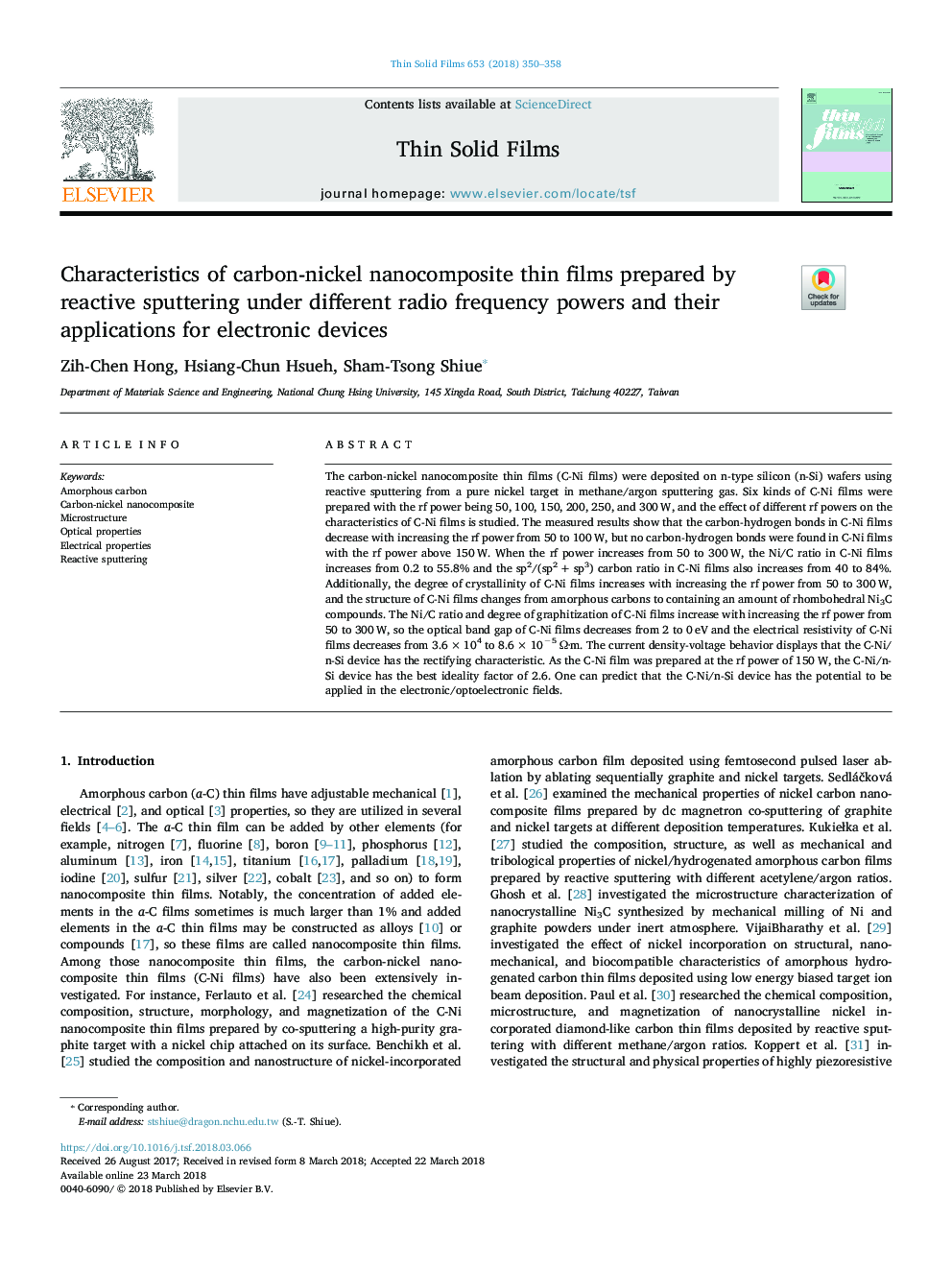| Article ID | Journal | Published Year | Pages | File Type |
|---|---|---|---|---|
| 8032752 | Thin Solid Films | 2018 | 9 Pages |
Abstract
The carbonânickel nanocomposite thin films (C-Ni films) were deposited on n-type silicon (n-Si) wafers using reactive sputtering from a pure nickel target in methane/argon sputtering gas. Six kinds of C-Ni films were prepared with the rf power being 50, 100, 150, 200, 250, and 300â¯W, and the effect of different rf powers on the characteristics of C-Ni films is studied. The measured results show that the carbon-hydrogen bonds in C-Ni films decrease with increasing the rf power from 50 to 100â¯W, but no carbonâhydrogen bonds were found in C-Ni films with the rf power above 150â¯W. When the rf power increases from 50 to 300â¯W, the Ni/C ratio in C-Ni films increases from 0.2 to 55.8% and the sp2/(sp2â¯+â¯sp3) carbon ratio in C-Ni films also increases from 40 to 84%. Additionally, the degree of crystallinity of C-Ni films increases with increasing the rf power from 50 to 300â¯W, and the structure of C-Ni films changes from amorphous carbons to containing an amount of rhombohedral Ni3C compounds. The Ni/C ratio and degree of graphitization of C-Ni films increase with increasing the rf power from 50 to 300â¯W, so the optical band gap of C-Ni films decreases from 2 to 0â¯eV and the electrical resistivity of C-Ni films decreases from 3.6â¯Ãâ¯104 to 8.6â¯Ãâ¯10â5â¯Î©Â·m. The current density-voltage behavior displays that the C-Ni/n-Si device has the rectifying characteristic. As the C-Ni film was prepared at the rf power of 150â¯W, the C-Ni/n-Si device has the best ideality factor of 2.6. One can predict that the C-Ni/n-Si device has the potential to be applied in the electronic/optoelectronic fields.
Related Topics
Physical Sciences and Engineering
Materials Science
Nanotechnology
Authors
Zih-Chen Hong, Hsiang-Chun Hsueh, Sham-Tsong Shiue,
